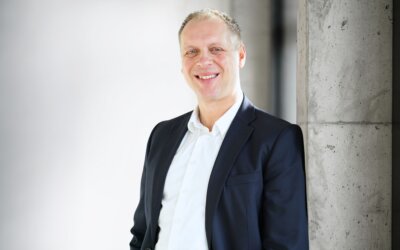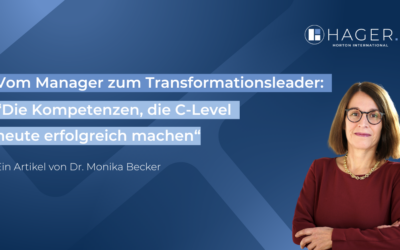
Introduction and personal presentation
Sahar Zabler (SZ): Welcome to today’s podcast. I’m delighted to be talking to an expert from the construction and real estate industry today about a very relevant and important subject: Sustainability in construction planning and building technology. Let’s jump straight into the conversation.
SZ: Could you please introduce yourself and tell us something about your role and your company?
NL: My name is Niklas Lenkewitz. I am the managing partner of Planungsgruppe KMO Ing.- GmbH from Eutin. We are a traditional investment company for technical building equipment with 24 employees and work on all investment groups and service phases in accordance with HOAI. We work almost exclusively on public construction projects.
Sustainability and CO2 emissions
SZ: Sustainability is a major topic in the construction industry. How do you see the impact of CO2 reduction and resource consumption on your current construction projects?
NL: The topics you mentioned have become increasingly relevant in recent years. Until a few years ago, these topics were already present in the projects, but played a rather subordinate role compared to the topics of functionality, costs and individuality of a construction project. Their relevance has continued to increase over the last few years. It has now reached a point where we can clearly say that the sustainability and CO2 emissions of a building project are among the most important criteria. Independent of the building technology, we have noticed, for example, that the Renovation of a building is now preferred to a new build if the costs are similar.
Translated with www.DeepL.com/Translator (free version)
It is therefore accepted that one has to deal with existing situations in the future building that could have been better solved in a new building. The background to this decision is rather that the so-called gray energy, which was required for the construction of the building, is stored in the existing building. In the case of a new building, this would be released by the demolition work. In addition, “new” energy would have to be used for the construction of a new building.
Translated with www.DeepL.com/Translator (free version)
Changes in building technology
SZ: How has building technology changed in recent years due to increased sustainability requirements?
NL: As already answered in general to question 2, the demands and challenges for building services engineering have of course also changed fundamentally. In the past, the task of a building services planner was to hand over a functioning building (e.g. school or hospital) to the client. The main focus here was on modern media technology equipment in the school, for example. This enables the user to apply the latest methods in teaching learning content. These requirements always had priority, which meant that if costs had to be saved, this was at the expense of a regenerative, innovative energy supply, for example. We are now pleased to note that the production of a modern building that meets all requirements is no longer in competition with a sustainable energy supply. Within a very short space of time, it has become clear that the heat supply for public buildings must be almost CO2-neutral and that all potential, such as PV systems on the roofs, must be exploited.
If it is not possible to include this in the construction budget (which is often set years in advance), creative solutions are often sought so that, for example, the operator of the PV system on the roof is not the building owner itself, but the local energy supplier. In the area of heat supply, the increased construction costs can also be reduced by contracting with an external service provider, for example.
Translated with www.DeepL.com/Translator (free version)
Costs and planning effort
SZ: Can you explain to us how the increased sustainability requirements affect the costs and planning effort in your projects?
NL: We realize that the implementation of a regenerative heat/energy concept is much more extensive and multifaceted than the supply of fossil fuels was before. The range of possible solutions is much more diverse. Over the last 10 years, the energy supply of a hospital has been almost exclusively based on fossil fuels (connection to a district heating network or supply from gas boilers). In the age of regenerative energy supply, it is hardly possible to supply a large public building with just one heat generation option. The solution often involves a complex interplay of several energy sources, from heat pumps (air-water or brine-water) to solar thermal energy or PVT collectors on the roof in combination with PV modules. In the future, other energy sources such as hydrogen will be added. It is completely self-explanatory that this will result in an immense amount of additional work in the first service phases. Furthermore, these regenerative energy concepts also lead to a noticeable increase in costs in KG 400.
Translated with www.DeepL.com/Translator (free version)
Project schedule and fee distribution
SZ:To what extent are the complex requirements for sustainable heating concepts currently taken into account in the project schedules and how does this affect the breakdown of fees according to HOAI?
NL: The above mentioned additional work is mainly incurred in the early service phases. Very detailed planning of the heat supply is already required for the development of the individual variants. This was previously only part of the later service phases. This shift in planning tasks is not taken into account in the current HOAI. However, if one only considers the total fee for a construction project, it can be seen that the additional planning services are also accompanied by increased construction costs, so that we consider the remuneration for our planning services to be adequate if the correct fee zone is selected.
Translated with www.DeepL.com/Translator (free version)
Technical progress and political framework conditions
SZ: Technological progress and political decisions change quickly. How do you deal with the challenge that established technologies may already be outdated by the time they are implemented?
NL:
We are currently seeing an enormous pace of technical progress in renewable energy supply. We are also confronted with constantly changing political framework conditions. From a social point of view, these circumstances can be seen as positive, as both developments have the same goal of a completely CO2-neutral energy supply and resource-saving construction projects. However, in large construction projects, which have a project duration of approx. 4 years (2.5 years planning and approval time and 1.5 years construction activity), this leads to major challenges. A building owner must be aware that a building that has been sustainably planned and constructed to the best of their knowledge and belief no longer necessarily corresponds to the current state of the art at the time of completion. However, we are happy to accept these challenges and also realize that almost every sector of the economy is confronted with this rapid change.
Translated with www.DeepL.com/Translator (free version)
Planning security for district heating
SZ: There is still no planning security for the use of district heating. What impact does this have on your projects and how are you dealing with it?
NL: The fact that political legislation requires every public municipality and local authority to submit a district heating concept by the end of 2024 currently poses an additional challenge for the planning of public construction projects. As already mentioned in the previous answers, the question of heat supply must be clarified at the very beginning of the construction project. It is often stated that a district/local heating network is planned in the future. However, implementation periods are not foreseeable due to unpredictable costs, a shortage of skilled workers and a wide variety of approval procedures. In any case, connecting a building to a regenerative district heating network is the cheapest way of supplying CO2-neutral energy. For this reason, the development of renewable district heating networks should be a top priority in all municipalities and local authorities. The fact that the heating network must be in operation before the building is completed represents an additional challenge and interface.
Translated with www.DeepL.com/Translator (free version)
Sustainability in the planning office
SZ: Your company sets a good example by using sustainable technologies. Can you give us some specific measures that you have implemented?
NL: As a planning office for technical building services, it goes without saying that we should and want to be a role model in terms of CO2-neutral energy. For this reason, our office building is supplied with heat via an air-to-water heat pump. The PV system, which has been in operation for over 10 years, was expanded by two additional PV systems in 2024. We also had an electricity storage system installed. The planning office’s entire vehicle fleet consists of electric vehicles. The aforementioned measures are a matter of course for us as an innovative company. For the most part, they are already proving to be economical at the present time. They also serve as good examples of new energy technologies for clients or for young employees, some of whom still have little practical experience after completing their studies.
Translated with www.DeepL.com/Translator (free version)
Rating criteria for public contracts
SZ: So far, sustainability has not played a major role in the awarding of construction contracts. How do you see this topic developing in public procurement procedures in the future?
NL: At present, the issue of sustainability is still treated in a subordinate manner in public procurement processes. In our opinion, it is only a matter of time before further and more specific sustainability criteria are included in these processes. As explained in the previous question, we believe we are very well positioned in this area. We look forward to presenting our convictions and actions in this regard to our future clients in future application procedures. Of course, the planning and site supervision service only accounts for a small part of the CO2 emissions of a large construction project. But even this should be reduced at present and equalized in the long term.
Translated with www.DeepL.com/Translator (free version)
Outlook for the future
SZ: Finally, I would like to hear your opinion on the future of sustainability in the construction and real estate industry. What trends and developments do you expect to see in the coming years?
NL: As a small, medium-sized planning office for technical building services, we are very positive about the future. The challenge of resource-conserving buildings and a sustainable energy supply leads to a high demand for our planning services. As engineers, we look forward to further technical progress. We are highly motivated to plan and implement the latest technologies economically for our clients.
Translated with www.DeepL.com/Translator (free version)
Conclusion:
SZ: Thank you very much for joining us today and giving us such valuable insights into sustainability and building technology.
Learn more about: Sahar Zabler


